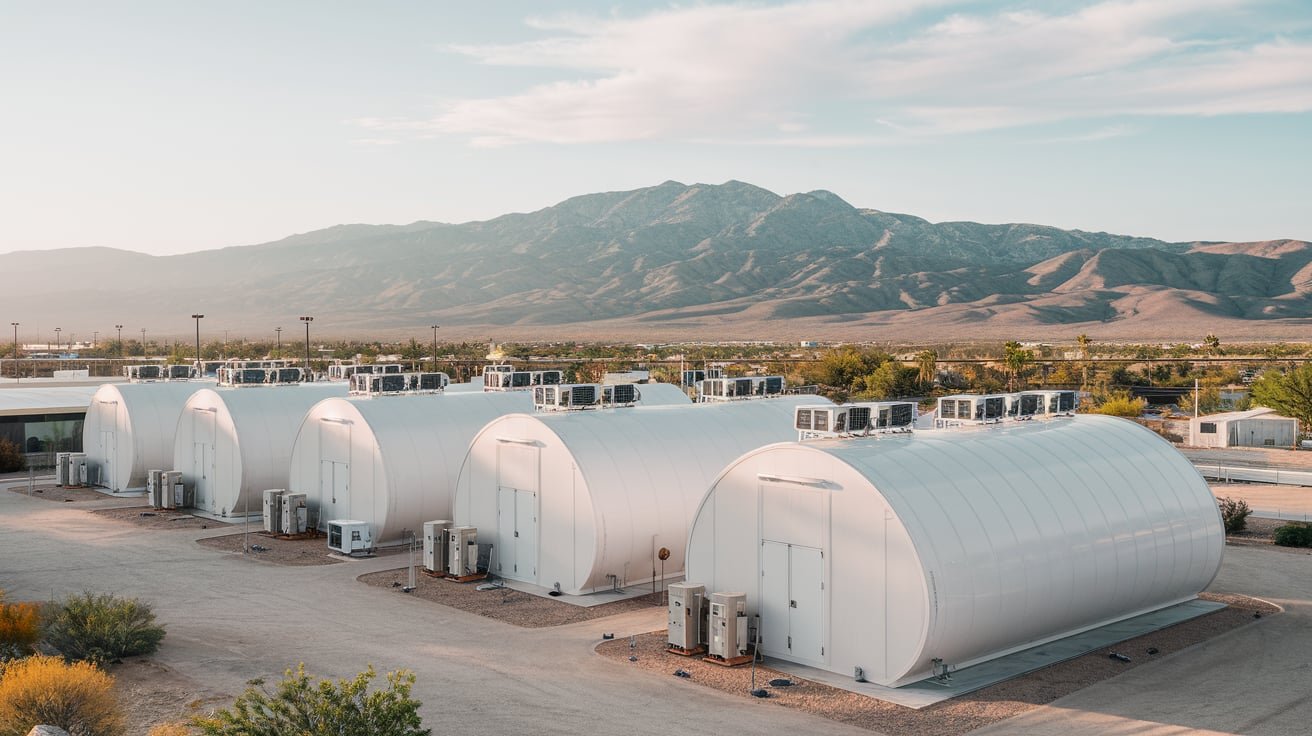Introduction to Tech Clean California
Tech Clean California represents a significant initiative aimed at addressing the pressing need for sustainable technology practices within the state. Amidst growing concerns about climate change and environmental sustainability, California has positioned itself as a leader in innovation and environmental stewardship. This initiative seeks not only to promote clean technology advancements but also to integrate these practices into everyday life and business operations across various sectors.
The primary goals of Tech Clean California are manifold. First and foremost, it aims to reduce greenhouse gas emissions and bolster the state’s transition to a cleaner, more sustainable economy. This goal aligns with California’s ambitious climate targets, which include achieving net-zero emissions by 2045. By emphasizing the development and adoption of clean technologies, the initiative fosters a collaborative environment where businesses, researchers, and government entities can work together to innovate sustainable solutions.
Moreover, Tech Clean California also focuses on the economic aspect of clean technology. By investing in green innovation, California aims to create high-quality jobs and stimulate economic growth. The initiative recognizes that a robust clean tech sector can drive advancements not only within the state but also on a national and global scale. Thus, supporting research and development in renewable energy, energy efficiency, and eco-friendly practices is paramount.
California’s commitment to leading in clean technology innovations serves as a blueprint for other states and regions. By embracing a comprehensive approach that integrates environmental responsibility with technological advancement, Tech Clean California aims to inspire similar initiatives across the globe. The initiative paves the way for a sustainable future, reinforcing the belief that progress in technology and responsibility towards the environment can coexist harmoniously.
The Rise of Clean Technology in California
California has established itself as a pioneering force in the clean technology sector, emerging as a national and global leader in sustainable innovation. The roots of this movement can be traced back to the state’s progressive environmental policies and commitment to sustainability. In the early 2000s, California began implementing various regulations aimed at reducing greenhouse gas emissions, which laid the groundwork for the tech clean California initiative. By establishing strict emissions targets, the state attracted businesses focused on developing eco-friendly technologies.
The California government has played a crucial role in fostering the growth of this industry, actively offering incentives and funding programs to stimulate investment in clean technology. Programs such as the California Energy Commission and the California Public Utilities Commission provide financial support and regulatory frameworks that encourage research and development in renewable energy sources, energy efficiency, and sustainable transportation. These initiatives have not only facilitated the growth of startups in the clean tech sector but have also attracted established companies looking to innovate and expand their operations in California.
Investment in clean technology has surged in California, with venture capital flowing into startups focused on renewable energy, electric vehicles, and energy-efficient appliances. The state’s robust entrepreneurial ecosystem, coupled with research institutions and universities, has fostered a culture of innovation that is central to the tech clean California movement. This environment has enabled collaboration between academia, industry, and policymakers, resulting in groundbreaking advancements that have set a benchmark for other states and countries to follow.
As the world increasingly shifts towards sustainable practices, California’s leadership in clean technology reinforces its reputation as a hub for innovation. Its comprehensive approach to policy, investment, and collaboration continues to inspire the global community, highlighting the potential and importance of clean technology in addressing climate change and promoting environmental stewardship.
Key Players in the Tech Clean California Movement
The Tech Clean California initiative has gained momentum through the collaborative efforts of various stakeholders committed to promoting sustainability and innovation within the technology sector. Key players in this movement include government agencies, startups, non-profits, and educational institutions, all of which are vital to the success of this initiative.
Government agencies are at the forefront, providing the regulatory framework and financial incentives essential for fostering clean technology development. California’s state government has initiated numerous programs aimed at reducing emissions and encouraging the adoption of sustainable practices among tech companies. Agencies such as the California Energy Commission and the California Public Utilities Commission play crucial roles in establishing standards that guide innovation while ensuring compliance with environmental policies.
Startups are another driving force within the Tech Clean California landscape, often being the source of groundbreaking technologies and solutions designed to enhance energy efficiency and reduce carbon footprints. These small enterprises are known for their agility and creativity, enabling them to develop clean tech solutions that align with the state’s sustainability goals. Partnerships between established companies and startups often yield significant advancements in clean energy technologies.
Non-profit organizations contribute significantly as well, often acting as intermediaries between the public and private sectors. They engage in advocacy, education, and outreach efforts, ensuring that both the tech industry and the general public are aware of sustainability initiatives and their significance. Furthermore, educational institutions are increasingly involved in this movement by fostering research and development that supports the principles of Tech Clean California. Collaboration between universities and industry players results in innovative projects that address climate challenges.
This diverse coalition of stakeholders is instrumental in driving the Tech Clean California initiative forward, with their collective efforts enhancing innovation and sustainability across the state’s technology sector.
Innovative Technologies Driving Change
The Tech Clean California initiative is at the forefront of promoting sustainable practices through innovative technologies. Central to this program are advancements in renewable energy, electric vehicles, and waste management systems, which together aim to transform the Golden State into a leader in sustainability. These technologies are not merely improvements; they represent a significant shift towards a cleaner future, aligning with the objectives of Tech Clean California.
Renewable energy technology plays a pivotal role in this initiative. With the rise in solar and wind energy projects, California is harnessing its natural resources more effectively than ever before. Innovations such as energy storage systems are enhancing the efficiency of renewable sources, allowing excess energy generated during peak production times to be stored and utilized during high-demand periods. This ensures a steady, reliable supply of clean energy, which significantly reduces reliance on fossil fuels.
In parallel, the electric vehicle (EV) sector is experiencing a technological renaissance. Advances in battery technology are improving EV range and performance while reducing costs. The proliferation of fast-charging infrastructure is making electric vehicles more accessible, encouraging wider adoption among consumers. California aims to reduce greenhouse gas emissions significantly by integrating electric vehicles into the transportation ecosystem, thus aligning with the overall goals of Tech Clean California.
Moreover, waste management technologies are being redefined through innovative solutions that promote recycling and composting. Smart waste bins equipped with sensors can optimize waste collection routes, minimizing fuel consumption and improving operational efficiency. The use of AI-driven analytics in waste management not only enhances recycling rates but also educates communities about responsible waste disposal practices.
Collectively, these technologies are integral to achieving the sustainable future envisioned by Tech Clean California. By embracing these advancements, the initiative is not just addressing environmental challenges but is also setting a precedent for other states and countries to follow in the quest for sustainability.
Challenges Facing the Clean Tech Sector
The clean tech sector in California is at the forefront of sustainable innovation, yet it grapples with a variety of challenges that impede progress. One significant barrier relates to economic factors. Funding for clean technology initiatives often relies on government support, grants, and private investments, which can be inconsistent. The volatile nature of funding can slow down the pace of development and implementation of tech clean California projects. Furthermore, high initial costs associated with clean technologies can deter small and medium enterprises from embracing sustainable solutions, creating a gap in market participation.
Regulatory hurdles also present a formidable challenge. California’s ambitious climate goals are often met with complex regulatory frameworks that can inadvertently hinder clean tech initiatives. The need to navigate a labyrinth of local, state, and federal regulations can delay project timelines and increase operational costs. Additionally, a lack of standardization in regulations across different jurisdictions can complicate compliance for businesses eager to innovate in the clean tech sphere.
Technologically, the sector faces inherent challenges as well. The rapid evolution of clean technologies requires continuous adaptation and integration, which can be resource-intensive. Companies must also contend with a competitive landscape where new entrants and established firms vie for dominance. This competition can lead to the fragmentation of innovation efforts, making it challenging to achieve overarching tech clean California initiatives.
Lastly, public perception plays a critical role in the acceptance and ultimate success of clean technologies. Misconceptions regarding the efficacy and reliability of sustainable solutions can lead to resistance among consumers. Hence, there is a vital need for broader consumer engagement and education to foster public trust and enthusiasm for clean tech initiatives. Addressing these multifaceted challenges is essential to realize the full potential of the clean tech sector in California.

Case Studies of Successful Tech Clean Companies
As the movement toward sustainable innovation gains momentum, several companies have emerged as exemplary models within the framework of Tech Clean California. These organizations are demonstrating how commitment to sustainability can translate into viable business practices while driving environmental benefits.
One prominent example is **Tesla**, which has redefined the automotive sector with its electric vehicles (EVs). By prioritizing the development of a sustainable transportation model, Tesla’s innovations, such as advanced battery technology and energy-efficient manufacturing processes, have significantly reduced the carbon footprint associated with traditional car production. Their commitment to sustainability extends beyond vehicles, as Tesla also promotes solar energy solutions that empower consumers to utilize clean energy, effectively contributing to Tech Clean California’s goals.
Another notable case is **Google**, a leader in integrating sustainability within its operations. Google has invested heavily in renewable energy, committing to power all operations with renewable sources by 2025. Through initiatives such as energy-efficient data centers and advocacy for green energy policies, Google showcases how tech companies can leverage their resources to foster a cleaner environment. The company’s comprehensive approach to sustainability not only serves their analysis requirements but also years of meticulous assessments to quantify impact—showing significant reductions in energy consumption.
**Intel** stands out as a pioneer in eco-friendly technology manufacturing. The company has set ambitious targets to reduce greenhouse gas emissions and increase water conservation. By introducing energy-efficient production methods and sustainable packaging solutions, Intel exemplifies how technology firms can incorporate eco-friendly practices while maintaining productivity. Their commitment to reducing operational waste aligns well with the core tenets of Tech Clean California, making them a benchmark within the industry.
These case studies exemplify how adopting sustainable principles can foster innovation and operational success. As the tech sector continues to evolve, the examples set by companies such as Tesla, Google, and Intel will undoubtedly inspire others to engage with the mission of Tech Clean California, ultimately steering the industry toward a more sustainable future.
The Role of Education and Workforce Development
The Tech Clean California initiative not only emphasizes the deployment of clean technologies but also recognizes the essential role of education and workforce development in achieving its goals. The transition to a sustainable and technologically advanced future requires a skilled workforce capable of navigating the complexities of the clean tech industry. To address this demand, various educational programs and partnerships are being established across California.
Educational institutions, including community colleges and universities, are revising their curricula to include clean technology concepts and practices. These institutions are collaborating with industry stakeholders to ensure that students are well-versed in the latest advancements in sustainable technologies. Programs focusing on renewable energy, environmental science, and sustainable engineering are being prioritized to align with the initiatives set forth in Tech Clean California. The integration of practical, hands-on experiences in these programs is crucial, as it enables students to apply theoretical knowledge in real-world scenarios.
Furthermore, workforce development initiatives play a vital role in reskilling and upskilling workers transitioning from traditional sectors to clean technology roles. Partnerships between public agencies and private companies have been formed to facilitate training programs that equip individuals with the competencies needed for high-demand positions within the clean tech sector. These training programs often include apprenticeships and internships that provide participants with valuable experience while supporting the goals of Tech Clean California.
In addition to formal education, community outreach programs are instrumental in raising awareness about career opportunities in the clean technology field. By engaging underrepresented communities and promoting diversity in the workforce, these initiatives aim to create an inclusive environment where all individuals can contribute to sustainable innovation. Workforce development, thus, remains a cornerstone of Tech Clean California, allowing the state to harness its human capital effectively in building a sustainable future.
Policy and Legislative Support for Clean Tech
The clean tech industry in California has garnered substantial attention and support from state and federal governments, leading to policies and legislative measures designed to spur innovation and drive sustainable practices. These initiatives are critical in establishing California as a leader in the tech clean California movement, focusing on reducing greenhouse gas emissions and promoting renewable energy solutions. The state’s commitment to clean technology is evident through various incentives, grants, and regulatory frameworks aimed at guiding and fostering advancements in this vital sector.
One key aspect of state support is the numerous financial incentives available to companies engaged in clean tech development. This includes tax credits and rebates designed to lessen the financial burden on clean tech initiatives. For instance, the California Competes Tax Credit program offers financial incentives to businesses that establish or expand operations within the state, specifically targeting industries that demonstrate a commitment to sustainable practices. These financial incentives encourage the growth of clean technology enterprises while ensuring that they contribute positively to the state’s environmental goals.
Furthermore, grants provided by bodies such as the California Energy Commission and local governments are crucial for startups and established firms that are unwilling to bear the risks associated with early-stage clean tech innovation. These governmental bodies often fund research and development projects that align with California’s climate goals, ensuring that funds are directed towards projects yielding significant environmental benefits. Additionally, legislative measures serve as a backbone for regulating and guiding clean tech operations, establishing environmentally sound practices that align with the tech clean California objectives. Compliance with these regulations helps to ensure that innovative technologies developed in the state meet rigorous environmental standards, supporting long-term sustainability.
Overall, California’s proactive approach to policy and legislative support significantly contributes to the clean tech industry’s growth and resilience, fostering an ecosystem that champions sustainable innovation while adhering to essential environmental standards.
Future Outlook for Tech Clean California
The trajectory of the Tech Clean California initiative indicates a promising landscape for sustainable innovation in the coming years. As more stakeholders, including government entities, private sectors, and civic organizations, recognize the importance of clean technology, a collaborative effort is anticipated to drive advancements in the field. This growing awareness is expected to catalyze the implementation of cutting-edge technologies that optimize energy efficiency and reduce carbon footprints.
Emerging trends indicate a significant investment in renewable energy sources, such as solar and wind power, as California continues to harness its natural resources to power the state. In particular, advancements in energy storage technology are crucial, allowing for the effective use of renewable energy. Such innovations not only support the Tech Clean California goals but also enhance grid reliability and resilience against outages.
Moreover, the expansion of electric vehicle infrastructure signifies a keystone in California’s clean transportation efforts. As electric vehicles gain traction, charging stations and associated technologies are anticipated to proliferate, further supporting the shift to sustainable transportation. This movement aligns with state policies aimed at reducing overall greenhouse gas emissions and promoting cleaner air quality.
Policy shifts are also playing a critical role in the future of Tech Clean California. With ongoing legislative efforts aimed at bolstering the clean tech sector, new incentives and funding programs are expected to emerge. These initiatives may provide financial support for startups and established companies alike, promoting research and development in environmentally friendly technologies.
In conclusion, the future of the Tech Clean California initiative appears bright, with emerging trends promising significant advancements in technology and policy. As California embarks on this journey toward a more sustainable future, the integration of clean technology will remain paramount in achieving the state’s environmental goals.
you may also read


